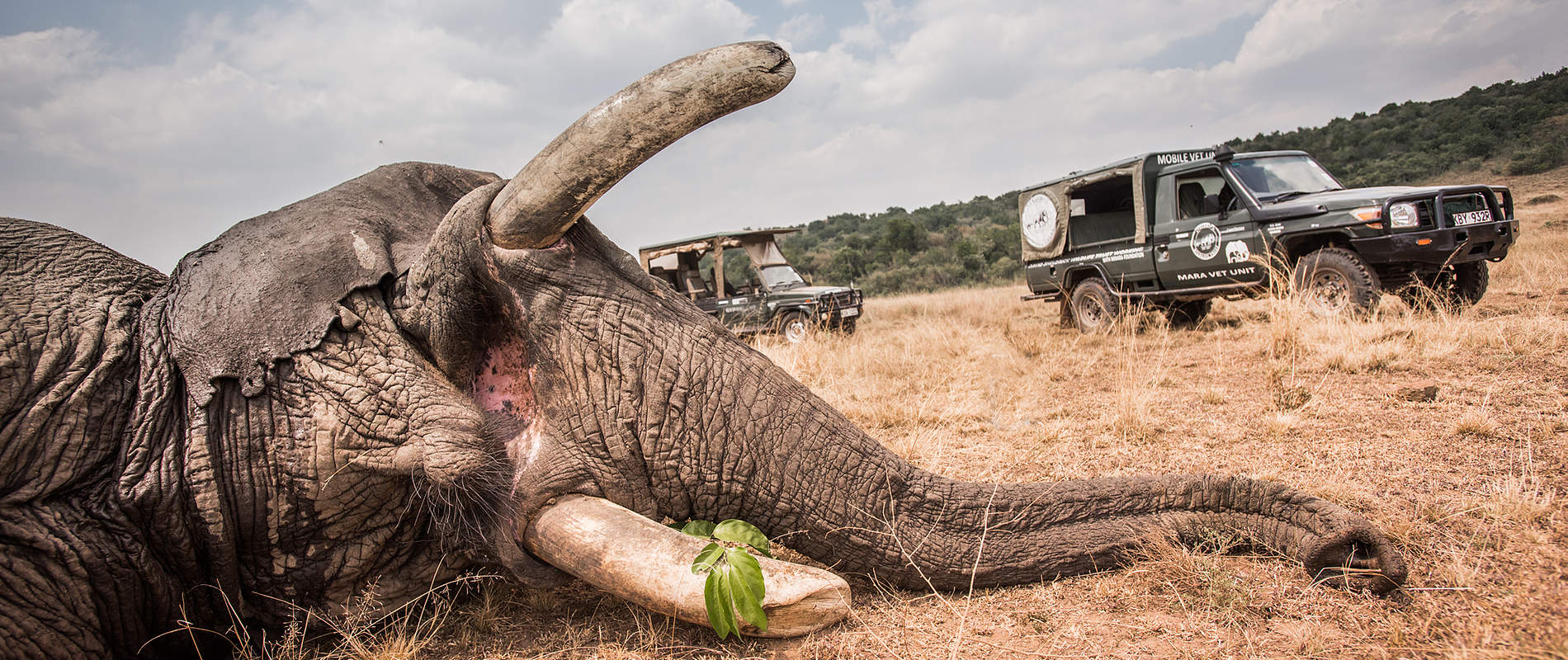The 12th August was World Elephant Day, a date to honour the magnificent species and spread awareness about the myriad of threats they face. Fittingly, we spent the previous day hard at work in the field, helping an iconic old bull in the Masai Mara.
Visitors first spotted the bull drinking from the Mara River. He was suffering from a badly infected wound on his tail, which had every indication of being inflicted by a spear. After receiving coordinates, our SWT/KWS Mara Veterinary Unit mobilised to treat him. The team is based on the Keekerok side of the river, so it took several hours of driving to reach his location on the Mara Conservancy side. After a long, bumpy journey, they arrived at his supposed location — but he was nowhere to be found. A thorough search ensued, but still they were unable to track him down.



In a happy coincidence, the SWT helicopter was working in the Mara at the time, so our pilot did a scan from the skies. They eventually found the bull on the Keekerok side of the Mara River: While the Veterinary Unit had just spent all that time crossing over to the Mara Conservancy side, he had fancied a change of scenery and forded the river! The helicopter coaxed him towards the river, but then landed, so as to not exert too much pressure on his movements. Fortunately, he made the choice on his own and waded back to his original location, where the team was ready and waiting. Dr. Limo, the Unit’s KWS veterinary officer, quickly darted the patient from the helicopter. After about seven minutes, he slumped to the ground — but in a very dignified manner, first sitting on his haunches before sinking to a recumbent position.



Before the helicopter had even landed, the ground team was already at the patient’s side. One ranger wedged a stick in his trunk to keep his airways open, while another gently flopped an ear over his eye to shield him from the glaring sun. They then manoeuvered the bull’s giant tail to inspect the damage. His injury was heavily infected and full of maggots. A meticulous cleaning ensued, and after Dr. Limo was satisfied that the puss and every last maggot had been expelled, the team packed the gaping hole with green clay. Antibiotics and anti-inflammatories were then injected, and finally, the anaesthetic reversal was administered. The bull slowly heaved himself to his feet while the team watched from a respectable distance. He ambled by the veterinary vehicle, seemingly oblivious to all that had just unfolded, and strode off into the Mara.



This bull serves as a poignant reminder of the changing world elephants must grapple with. He is truly a magnificent fellow, well into his 50s or possibly even his 60s, with ivory worn from years of survival. In the half-century he has roamed this earth, he has bore witness to a shrinking habitat and a growing human footprint. The ranges he and his ancestors once trod are now peppered with human settlements, which leads to inevitable conflict. We suspect he was speared when he travelled across land that was once elephant territory, but has since been appropriated by man. However, he is one of the lucky ones. Dr. Limo gave him a good prognosis for recovery, and now he is deep in the Masai Mara National Reserve, where we hope he will remain to convalesce in safety.



We thank the SWT/KWS Mara Mobile Veterinary Unit for their unfaltering commitment to Kenya’s wildlife. We also thank the Minara Foundation, who has generously contributed to their funding. In its 14 years of operation, this Unit has treated many hundreds of elephants, rhinos, lions, and other creatures, saving scores of wild lives in the process.



